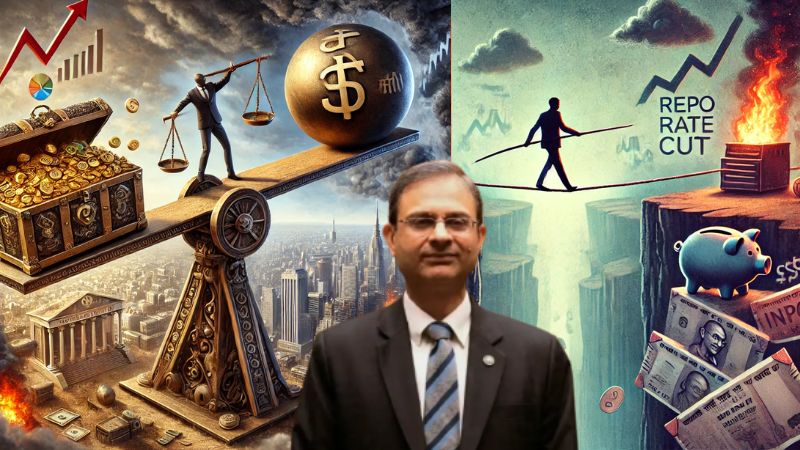After a long waiting period of nearly 5 years, the Monetary Policy Committee (MPC) of the Reserve Bank of India (RBI), headed by Governor Sanjay Malhotra, finally reduced the repo rate by 25 basis points. The reduction in benchmark rate was essential to spur economic growth and was much needed given the slow down in the growth in the past few months due to weakened urban consumption. The wages of the urban workforce has failed to keep up the pace to beat the rising inflation.
Interestingly, this factor made the rate cut decision even more peculiar in the past as reduction in benchmark rate would have further raised inflation.
The dynamics of repo rate, inflation and economic growth
With due consideration, reduction in repo rate increases borrowing from banks by the business entities which churns economic activity in the country. But it’s not that easy as spurt of capital in the market can also lead to spikes in prices leading to inflation.
Therefore, the RBI has to make a very calculative decision while altering the repo rate. Hence, the rate cut decision, although came after a long time, is a well calculated move by the central bank.
Why did the RBI keep rates unchanged in the last MPC meeting?
In an earlier MPC meeting in December 2024, when Dr Shaktikanta Das was the RBI Governor, the committee decided to stay firm on unchanged rates. Before the meet, it was anticipated that the rates would be reduced because every country had reduced their benchmark rates to spur economic growth back then. However, the RBI had argued that it couldn’t reduce the rates until there was firm assurance that inflation was easing towards the target.
Back in the December meeting, the available figures of retail inflation were not so motivating. The inflation had peaked in October forcing RBI to rejig inflation projection for this FY from 4.5 to 4.8 per cent.
Besides, the RBI was also sceptical of the administrative changes in the USA. Trump’s inauguration was ahead and the central bank was convinced to monitor the policies of the new administration, which would have an effect on inflation and currency dynamics, before taking any decision on rate cuts.
As anticipated, the Trump policies proved daunting as foreign investment was pulled out abruptly rendering Rupee dwindling.
Correct time to reduce benchmark rate
But as the storm is now calm and the dust has settled, the picture has become clearer. The global policy changes and its effects are now plausibly predictive for the near future.
Besides, the inflation has also eased. Despite still being above the RBI target, the retail inflation eased to 4.9 in FY25 (April-December) in comparison to 5.4 in FY24, according to the Economic Survey tabled in the Parliament by Union Finance Minister Nirmala Sitharaman.
Notably, the food price inflation still remained firm during this period due to high prices of pulses and vegetables. However, the price of vegetables have also eased in local markets now which has raised hopes for reduction in the food price inflation in coming months.
During the announcement of decisions taken in the MPC meet, RBI Governor Malhotra also said that the inflation would ease in 2025 and 2026, which makes the rate cuts even more reasonable.
Given the fall in inflation figures, and foreseeable stability in global markets in near future and ease in inflation, it was the most appropriate time for rate cuts as resonated by the RBI’s approach that Malhotra made clear by saying that the central bank is now prioritising spurring growth.
